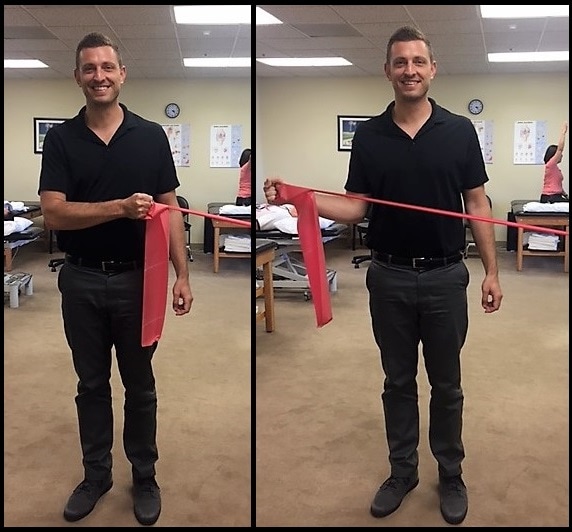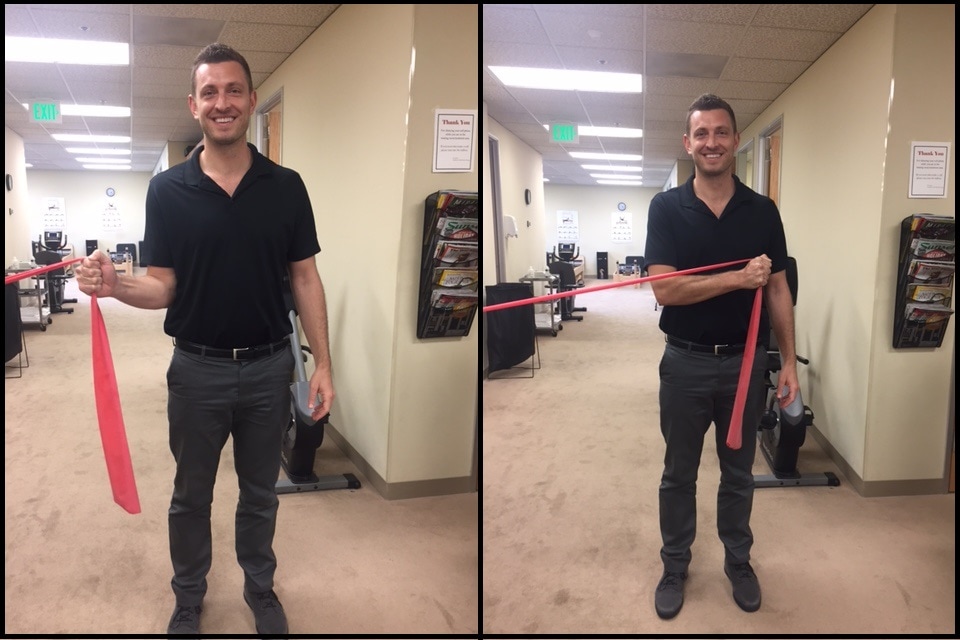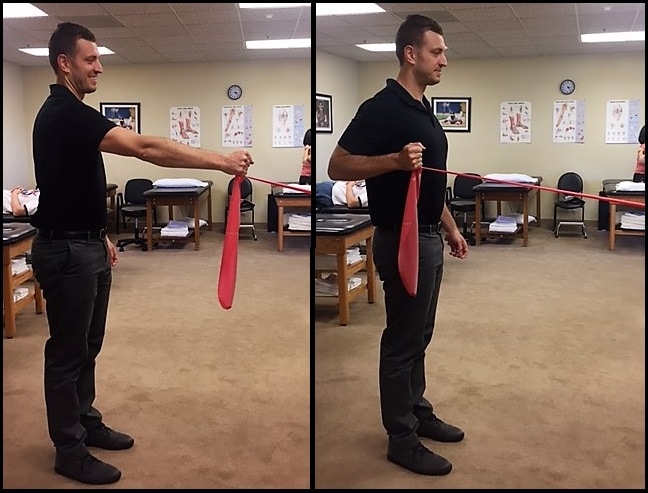|
There is much-to-do about foot strike, running, and injury. With thousands of research articles and even more theories and opinions, it is tough to know what really is the best running form. Below are two sets of pictures of foot strike patterns taken at the 2016 Portland Marathon. Research shows injury correlation is not how the foot contacts ground (i.e. Fore-, Mid- or Rear-foot), but where the foot contacts ground in relation to the knee. TOP TWO PICS: GOOD! Contact is under the flexed knee with the shin vertical (green plumb line drawn from knee to ground). BOTTOM TWO PICS: BAD! Heel contact is well in front of the knee with the shin not vertical. The knee has with little to no flexion. These athletes are over striding and highly likely have low cadence.
Come in to SRVPT and work with one of our physical therapists who can help you with your running form, training routine, and possibly prevent injury! Special thank you to Karl Kolbeck, PT at Rose City PT in Portland for providing the great information!
0 Comments
In 2015, Golden State Warriors coach Steve Kerr had surgery to fix a ruptured disk in his low back.
Since, he has fought complications, including missing almost half of the games last year and now, missing games 3 and 4 of the playoff series against the Portland Trailblazers. Unfortunately, he could be out longer depending on how fast he recuperates. “I can tell you if you’re listening out there, if you have a back problem, stay away from surgery,’’ Kerr told reporters. “I can say that from the bottom of my heart. Rehab, rehab, rehab. Don’t let anyone get in there.” While San Ramon Valley Physical Therapy has helped numerous patients recover very well from low back surgery, the key take away from Kerr's message is to make sure you attempt a great rehab program before going under the knife. In the ABC article, Spine Surgeon Dr. Steven Lee at Muir Orthopedics gives a great perspective confirming that a majority of people do not need surgery and low back pain can be solved in many different ways. If you have questions about your low back pain, feel free to reach out to us at: [email protected] A low back MRI can help out a great deal with understanding if there is anything wrong with the anatomical structures (like a fracture, spinal cord damage, or even cancer). Once major diagnoses are cleared, scary words like "degeneration" and "disk bulge" may appear on the MRI report It is important to realize that these findings are very common in people without any pain. A few smart researchers performed a study and looked at low back imaging of over 3,000 asymptomatic people of all ages and found some pretty amazing information. See a nice chart of their finding below: The study's abstract says it best:
"The prevalence of disk degeneration in asymptomatic individuals increased from 37% of 20-year-old individuals to 96% of 80-year-old individuals. Disk bulge prevalence increased from 30% of those 20 years of age to 84% of those 80 years of age." Imaging findings of spine degeneration are present in high proportions of asymptomatic individuals, increasing with age. Many imaging-based degenerative features are likely part of normal aging and unassociated with pain. These imaging findings must be interpreted in the context of the patient’s clinical condition." Bottom line: Just because your MRI says there is spine degeneration, don't fret! It's part of the normal aging process. If you have back pain, skilled physical therapy can help get you moving pain-free! Let us know if you have any questions! [email protected] If your shoulder has been irritating you for a while, there is a good chance there is some weakness. Check out these 4 single arm exercises to get you started! A band is required, which can be affixed to a door knob. If you need a band, let me know and we can make it happen! 1. External Rotation; 10-15 x 3 sets. 2. Internal Rotation; 10-15 x 3 Sets 3. Single Arm Row; 10-15 x 3 sets 4. Single Arm Band Punch; 10-15 x 3 sets We hope these exercises help to build strength in your shoulder and possibly help reduce pain in the shoulder (and can even help in some cases with neck and elbow pain!).
Have a great week!. -Dominick [email protected] I recently came across a study that found from 2007-2011, almost 1 million people went to their doctor for plantar fasciitis, accounting for over 5.7 MILLION visits. Pretty amazing how prevalent of an issue foot and heel pain is in America. What was even more staggering was that only 7% of those patients went on to see a physical therapist to help treat their symptoms. Really?? While plantar fasciitis is difficult to treat, physical therapy, from a good clinician, should, at the very least, be able to minimize your discomfort, Yes, passive modalities are helpful (ultrasound, iontophoresis, ice, TENS, etc.) but hands-on treatment, further understanding of the cause of your symptoms, and a solid home exercise program that is correctly followed should give you significant relief. We see it in our clinic every day. Don't blame the heel spur, please. Another interesting study looked at people with and without plantar fasciitis and found almost 50% of people WITHOUT plantar fasciitis had a heel spur. The study further went on to say that "key radiological features that differentiate the groups were not spurs but rather changes in the soft tissue." 2 (of many) Things to Try: 1. Toe/Achilles Complex Stretch - 5 sec holds 10x; 3-5 x per day, especially in the AM and before you hit the sack. 2. Ball on soft tissue - 2-5 minutes 3-5 x per day...especially in the AM and before bed time. Please come and see us if you have been having persistent heel pain. There is a good possibility we can help get rid of your symptoms. Let me know if you have any questions: [email protected]
Pain is a serious issue that hampers millions of Americans every year. Not only does it effect our qualify of life but it also lightens our wallets. In 2010, it was estimated that the United States spent between $500 billion and $635 billion on the treatment of pain. To put these numbers in perspective, that same year $309 billion was spent treating heart disease, $243 billion was spent treating cancer, and $188 billion was spent treating diabetes. THAT IS CRAZY! We spend more money on PAIN than heart disease, cancer, and diabetes combined. But another recent study showed: Call and see how we may be able to help you save some money and get rid of pain simultaneously :)
As physical therapists who try to stay up with the latest research in our field, we feel it's important the general public is more aware and understanding of their bodies and how it works.
Below is a part of Richmond Stance's article on Specialist Pain Physio and are 5 common myths of low back pain: 1. Bending is dangerous 2. Discs slip 3. Nerves are trapped 4. Low back pain is in isolation to everything else in your life. Comments: 1. Bending is normal. Sure it can hurt when the back is being protected, and when we have back pain the muscles are guarding and this can reduce the amount of movement. In the acute phase, most positions and movements hurt, but this is protection and it is meant to be unpleasant in order to motivate action. Moving little and often, changing position and breathing all help to keep blood and oxygen flowing. 2. Discs are not actually discs and they do not go anywhere. Yes they can be injured like any other tissue. They can bulge and affect the local environment, and they can herniate, triggering a healing response — both can hurt because protection is initiated. The fact that there are so many nerve endings around the area mean that sensitivity can arise in a vigorous manner. Again, this is a normal if highly unpleasant experience. Remember that a 1/3 of the population have such changes in their spine but without any pain. The body as a whole must rate the situation as threatening for it to hurt. 3. Nerves do not get trapped. Local swelling and inflammation can sensitize the nerves meaning that they send danger signals. There is not too much room either, so if there is swelling or a bulge, this can affect blood flow to the nerve itself and cause sensitivity to movement and local chemical changes. Again, this can happen without pain as well, so it is down to the individual’s body systems and how they respond. Understanding, gradually moving and breathing can all help ease you through this phase. 4. Low back pain is embedded within your lifestyle. It is not separate to how you live — e.g. lack of exercise, postures, work, stress, emotional state, previous experiences, understanding of back pain, gender, genetics, just to name a few. This maybe more complex, but this provides many avenues for overcoming pain. We wish you a happy weekend! Dominick |
AuthorThe therapists at SRVPT have a variety of backgrounds and are interested in sharing our knowledge with you! Check out their bios for more specific information. Archives
April 2024
Categories
All
|
|
San Ramon Valley Physical Therapy proudly serves the Alamo, Danville, San Ramon, Dublin, Pleasanton areas, along the 680 corridor.
© COPYRIGHT 2023 ALL RIGHTS RESERVED |















 RSS Feed
RSS Feed
